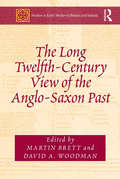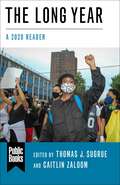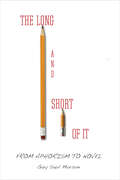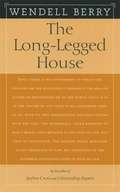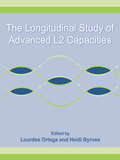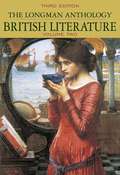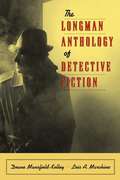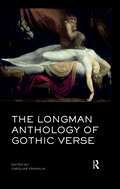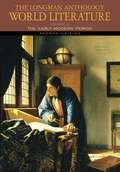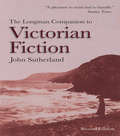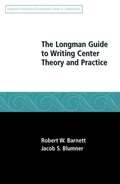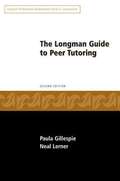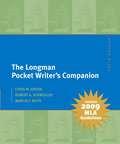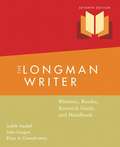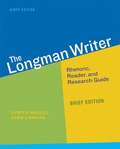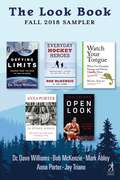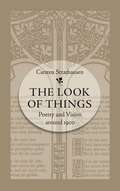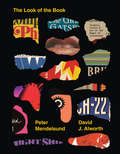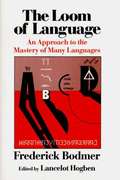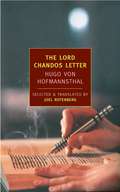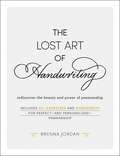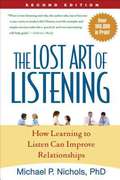- Table View
- List View
The Long Twelfth-Century View of the Anglo-Saxon Past (Studies in Early Medieval Britain and Ireland)
by Martin Brett David A. WoodmanScholars have long been interested in the extent to which the Anglo-Saxon past can be understood using material written, and produced, in the twelfth century; and simultaneously in the continued importance (or otherwise) of the Anglo-Saxon past in the generations following the Norman Conquest of England. In order to better understand these issues, this volume provides a series of essays that moves scholarship forward in two significant ways. Firstly, it scrutinises how the Anglo-Saxon past continued to be reused and recycled throughout the longue durée of the twelfth century, as opposed to the early decades that are usually covered. Secondly, by bringing together scholars who are experts in various different scholarly disciplines, the volume deals with a much broader range of historical, linguistic, legal, artistic, palaeographical and cultic evidence than has hitherto been the case. Divided into four main parts: The Anglo-Saxon Saints; Anglo-Saxon England in the Narrative of Britain; Anglo-Saxon Law and Charter; and Art-history and the French Vernacular, it scrutinises the majority of different genres of source material that are vital in any study of early medieval British history. In so doing the resultant volume will become a standard reference point for students and scholars alike interested in the ways in which the Anglo-Saxon past continued to be of importance and interest throughout the twelfth century.
The Long Year: A 2020 Reader (Public Books Series)
by Eric Klinenberg Joan Wallach Scott Julie Livingston Natalia Molina Jun Li Guobin Yang Andrew Lakoff Priscilla Wald Warwick Anderson Warren Breckman Adam Tooze Ananya Roy Sophie Lewis Neha Vora Margaret O'Mara Yarimar Bonilla Merlin Chowkwanyun Keeanga-Yamahtta Taylor Margaret Morganroth Gullette Marcia Chatelain Jacob A.C. Remes Joanne Randa Nucho Xiaowei Wang Miguel Centeno Jean-Paul Gagnon Keisha N. Blain Sulfikar Amir Mustafa Dikeç David Schmidt Gautam Bhan David S. Barnes Isabelle Guérin Andy Horowitz Simon Balto Éric Charmes Max Rousseau Michelle Cera Gilles Guiheux Ye Guo Renyou Hou Manon Laurent Anne-Valérie Ruinet Govindan Venkatasubramanian Mathieu Ferry Marine Al Dahdah Sherihan Radi Jeffrey Aaron Snyder Rachel Nolan Evan Lieberman Julia Foulkes Soledad Álvarez Velasco Sophie Gonick Alfonso Fierro Erick Corrêa Gianpaolo Biaocchi Jake Carlson Quentin Ravelli Rikki J. Dean Afsoun Afsahi Emily Beausoleil Selen A. Ercan Cordula Dittmer Daniel F. Lorenz Kathryn Cai Kavita SivaramakrishnanSome years—1789, 1929, 1989—change the world suddenly. Or do they? In 2020, a pandemic converged with an economic collapse, inequalities exploded, and institutions weakened. Yet these crises sprang not from new risks but from known dangers. The world—like many patients—met 2020 with a host of preexisting conditions, which together tilted the odds toward disaster. Perhaps 2020 wasn’t the year the world changed; perhaps it was simply the moment the world finally understood its deadly diagnosis.In The Long Year, some of the world’s most incisive thinkers excavate 2020’s buried crises, revealing how they must be confronted in order to achieve a more equal future. Keeanga-Yamahtta Taylor calls for the defunding of police and the refunding of communities; Keisha Blain demonstrates why the battle against racism must be global; and Adam Tooze reveals that COVID-19 hit hardest where inequality was already greatest and welfare states weakest. Yarimar Bonilla, Xiaowei Wang, Simon Balto, Marcia Chatelain, Gautam Bhan, Ananya Roy, and others offer insights from the factory farms of China to the elite resorts of France, the meatpacking plants of the Midwest to the overcrowded hospitals of India.The definitive guide to these ongoing catastrophes, The Long Year shows that only by exposing the roots and ramifications of 2020 can another such breakdown be prevented. It is made possible through institutional partnerships with Public Books and the Social Science Research Council.
The Long and Short of It: From Aphorism to Novel
by Gary MorsonBrevity may be the soul of wit, but it is also much more. In this exploration of the shortest literary works—wise sayings, proverbs, witticisms, sardonic observations about human nature, pithy evocations of mystery, terse statements regarding ultimate questions—Gary Saul Morson argues passionately for the importance of these short genres not only to scholars but also to general readers. We are fascinated by how brief works evoke a powerful sense of life in a few words, which is why we browse quotation anthologies and love to repeat our favorites. Arguing that all short genres are short in their own way, Morson explores the unique form of brevity that each of them develops. Apothegms (Heraclitus, Lao Tzu, Wittgenstein) describe the universe as ultimately unknowable, offering not answers but ever deeper questions. Dicta (Spinoza, Marx, Freud) create the sense that unsolvable enigmas have at last been resolved. Sayings from sages and sacred texts assure us that goodness is rewarded, while sardonic maxims (Ecclesiastes, Nietzsche, George Eliot) uncover the self-deceptions behind such comforting illusions. Just as witticisms display the power of mind, "witlessisms" (William Spooner, Dan Quayle, the persona assumed by Mark Twain) astonish with their spectacular stupidity. Nothing seems further from these short works than novels and epics, but the shortest genres often set the tone for longer ones, which, in turn, contain brilliant examples of short forms. Morson shows that short genres contribute important insights into the history of literature and philosophical thought. Once we grasp the role of aphorisms in Herodotus, Samuel Johnson, Dostoevsky, and even Tolstoy, we see their masterpieces in an entirely new light.
The Long-legged Horse
by Wendell BerryFirst published in 1969 and out of print for more than 25 years, this was Berry's first collection of essays, the inaugural work introducing many of the central issues that have occupied him over the course of his career.
The Longitudinal Study of Advanced L2 Capacities (Second Language Acquisition Research Series)
by Lourdes Ortega Heidi ByrnesResearchers and educators routinely call for longitudinal research on language learning and teaching. The present volume explores the connection between longitudinal study and advanced language capacities, two under-researched areas, and proposes an agenda for future research. Five chapters probe theoretical and methodological reflections about the longitudinal study of advanced L2 capacities, followed by eight chapters that report on empirical longitudinal investigations spanning descriptive, quasi-experimental, qualitative, and quantitative longitudinal methodologies. In addition, the co-editors offer a detailed introduction to the volume and a coda chapter in which they explore what it would take to design systematic research programs for the longitudinal investigation of advanced L2 capacities. The scholars in this volume collectively make the argument that second language acquisition research will be the richer, theoretically and empirically, if a trajectory toward advancedness is part of its conceptualization right from the beginning and, in reverse, that advancedness is a particularly interesting acquisitional level at which to probe contemporary theories associated with the longitudinal study of language development. Acknowledging that advancedness is increasingly important in our multicultural societies and globalized world, the central question explored in the present collection is: How does learning over time evolve toward advanced capacities in a second language?
The Longman Anthology of British Literature: The Romantics and Their Contemporaries (Volume 2A)
by David Damrosch Kevin J. H. DettmarResponding to major shifts in literary studies, this was the first collection to pay attention to the contexts within which literature is produced, even as it broadened the scope of that literature to embrace the full diversity of the British Isles.
The Longman Anthology of Detective Fiction
by Deane Mansfield-Kelley Lois A. MarchinoEssays and commentaries on the amateur detective, the private investigator, and the police along with excerpts. Includes a list of annual awards for mystery fiction and a bibliography of critical essays and commentaries.
The Longman Anthology of Gothic Verse
by Caroline FranklinGothic verse liberated the dark side of Romantic and Victorian verse: its medievalism, melancholy and morbidity. Some poets intended merely to shock or entertain, but Gothic also liberated the creative imagination and inspired them to enter disturbing areas of the psyche and to portray extreme states of human consciousness. This anthology illustrates that journey. This is the first modern anthology of Gothic verse. It traces the rise of Gothic in the late eighteenth century and follows its footsteps through the nineteenth century. Gothic has never truly died as it constantly reinvents itself, and this lively, illustrated and annotated anthology offers students the atmospheric poetry that originally studded terror novels and inspired horror films. Alongside canonical verse by Coleridge, Keats and Poe, it introduces readers to lesser-known authors excursions into the macabre and the grotesque. A wide range of poetic forms is included: as well as ballads, tales, lyrics, meditative odes and dramatic monologues, a medievalist romance by Scott and Gothic drama by Byron are also included in full. A substantial introduction by Caroline Franklin puts the rise of Gothic poetry into its historical context, relating it both to Romanticism and Enlightenment historicism. Although Gothic fiction has now been receiving serious critical attention for twenty years, Gothic verse has been largely overlooked. It is therefore hoped that this anthology will stimulate scholarly interest as well as readers pleasure in these unearthly poems.
The Longman Anthology of World Literature, Volume B: The Medieval Era (2nd Edition)
by David Damrosch David L. PikeThe Longman Anthology of World Literature, Volume B offers a fresh and highly teachable presentation of the varieties of world literature from the medieval era.
The Longman Anthology of World Literature, Volume C: The Early Modern Period (2nd Edition)
by David Damrosch David L. PikeThe Longman Anthology of World Literature, Volume C offers a fresh and highly teachable presentation of the varieties of world literature from the early modern period.
The Longman Companion to Victorian Fiction
by John SutherlandWith over 900 biographical entries, more than 600 novels synopsized, and a wealth of background material on the publishers, reviewers and readers of the age the Longman Companion to Victorian Fiction is the fullest account of the period's fiction ever published. Now in a second edition, the book has been revised and a generous selection of images have been chosen to illustrate various aspects of Victorian publishing, writing, and reading life. Organised alphabetically, the information provided will be a boon to students, researchers and all lovers of reading. The entries, though concise, meet the high standards demanded by modern scholarship. The writing - marked by Sutherland's characteristic combination of flair, clarity and erudition - is of such a high standard that the book is a joy to read, as well as a definitive work of reference.
The Longman Guide To Writing Center Theory And Practice
by Robert Barnett Jacob BlumnerThe Longman Guide to Writing Center Theory and Practice offers, in unparalleled breadth and depth, the major scholarship on writing centers. This up-to-date resource for students, instructors, and scholars anthologizes essays on all major areas of interest to writing center theorists and practitioners. Seven sections provide a comprehensive view of writing centers: history, progress, theorizing the writing center, defining the writing center's place, writing-across-the curriculum, the practice of tutoring, cultural issues, and technology.
The Longman Guide to Peer Tutoring
by Paula Gillespie Neal LernerGrounded in current writing center theory and practice, The Guide to Peer Tutoring provides students with a comprehensive introduction to effective tutoring. Throughout the book, readers hear the voices of tutors and writers in first-person peer tutor accounts, reflective essays, and transcripts from actual sessions. Within each chapter, techniques, models, and exercises provide instruction appropriate for any level of tutoring.
The Longman Pocket Writer's Companion (Third Edition )
by Marcia F. Muth Chris M. Anson Robert A. SchweglerThis handbook offers a distinctive focus on writing for different audiences -- academic, public, and workplace and enables you to communicate more effectively.
The Longman Reader (Eleventh Edition)
by John Langan Judith Nadell Eliza A. Comodromos Deborah Coxwell-TeagueFor courses in English Composition. The acclaimed rhetorical modes reader, with remarkably detailed writing guidance Best-seller The Longman Reader includes its abundant and highly praised pedagogy as well as a wealth of readings organized by patterns of development (an alternative table of contents organizes them thematically). The opening chapters focus on reading critically and the writing process. The subsequent chapters begin with detailed writing instruction, including an annotated student paper and revision and peer review checklists, and end with professional essays. These new and beloved professional essays range widely in subject matter and approach - from the humorous to the informative, from personal meditation to argument - and capture students' interest while demonstrating specific patterns of development. The Longman Reader shares the same readings and other core material with The Longman Writer.
The Longman Writer: Rhetoric, Reader, Research Guide, and Handbook (7th edition)
by John Langan Judith Nadell Eliza A. ComodromosClear, step-by-step writing instruction, ample annotated student essays, and extensive practice opportunities for writing have made The Longman Writer one of the most successful methods-of-development guides for college writing. Created by the authors of the best-selling Longman Reader, the text draws on decades of teaching experience to integrate the best of the "product" and "process" approaches to writing. Its particular strengths include an emphasis on the reading-writing connection, a focus on invention and revision, attention to the fact that patterns blend in actual writing, and an abundance of class-tested activities and assignments--more than 350 in all.
The Longman Writer: Rhetoric, Reader, and Research Guide
by John Langan Judith NadellThe Longman Writer includes everything that students and instructors need in a one or two-semester, first-year composition course: (1) a comprehensive rhetoric, including chapters on each stage of the writing process and discussions of the exam essay and literary paper; (2) a reader with professional selections and student essays integrated into the rhetoric; and (3) a research guide, with information on writing and properly documenting a research paper. Numerous activities and writing assignments--more than 500 in all--develop awareness of rhetorical choices and encourage students to explore a range of composing strategies. The ninth edition of The Longman Writer has been fully updated to provide helpful advice on the writing process, more in-depth coverage of the research process, and examples of student writing throughout.
The Look Book: Fall 2018 Sampler
by Anna Porter Mark Abley Dr Dave Williams Bob McKenzie Jay TrianoCelebrate Canadians from all walks of life with The Look Book, featuring a few of Simon & Schuster Canada’s highly anticipated fall books.Meet extraordinary Canadians who have helped make our country great. Read your way into the far reaches of space with celebrated astronaut, aquanaut, and ER doctor, Dave Williams. Meet the amateurs and the professionals behind Canada’s most beloved sport with everybody’s favourite broadcaster, Bob McKenzie. Explore the weird everyday sayings we use and the stories behind them with award-winning journalist and author Mark Abley. Go behind the scenes in the publishing trenches with the iconic publisher Anna Porter. And finally, follow the rise of basketball with NBA coach, Jay Triano. Includes samples from the following fall 2018 new releases: Defying Limits: Lessons from the Edge of the Universe, Dr. Dave Williams Everyday Hockey Heroes: Inspirational Stories On and Off the Ice, Bob McKenzie and Jim Lang Watch Your Tongue: What Our Everyday Sayings and Idioms Literally Figuratively Mean, Mark Abley In Other Words: How I Fell in Love with Canada One Book at a Time, Anna Porter Open Look: Canadian Basketball and Me, Jay Triano Happy Reading! The Team at Simon & Schuster Canada If you would like to learn more about any of our authors or the titles featured, please visit us at SimonandSchuster.ca, follow us on Twitter at @SimonSchusterCA, or like us at Facebook.com/SimonandSchusterCanada.
The Look of Things: Poetry and Vision Around 1900
by Carsten StrathausenExamining the relationship between German poetry, philosophy, and visual media around 1900, Carsten Strathausen argues that the poetic works of Rainer Maria Rilke, Hugo von Hofmannsthal, and Stephan George focused on the visible gestalt of language as a means of competing aesthetically with the increasing popularity and "reality effect" of photography and film. Poetry around 1900 self-reflectively celebrated its own words as both transparent signs and material objects, Strathausen says. In Aestheticism, this means that language harbors the potential to literally present the things it signifies. Rather than simply describing or picturing the physical experience of looking, as critics have commonly maintained, modernist poetry claims to enable a more profound kind of perception that grants intuitive insights into the very texture of the natural world.
The Look of the Book: Jackets, Covers, and Art at the Edges of Literature
by Peter Mendelsund David J. AlworthWhy do some book covers instantly grab your attention, while others never get a second glance? Fusing word and image, as well as design thinking and literary criticism, this captivating investigation goes behind the scenes of the cover design process to answer this question and more.As the outward face of the text, the book cover makes an all-important first impression. The Look of the Book examines art at the edges of literature through notable covers and the stories behind them, galleries of the many different jackets of bestselling books, an overview of book cover trends throughout history, and insights from dozens of literary and design luminaries. Co-authored by celebrated designer and creative director Peter Mendelsund and scholar David Alworth, this fascinating collaboration, featuring hundreds of covers, challenges our notions of what a book cover can and should be.
The Look of the Past
by Ludmilla JordanovaHow can we use visual and material culture to shed light on the past? Ludmilla Jordanova offers a fascinating and thoughtful introduction to the role of images, objects and buildings in the study of past times. Through a combination of thematic chapters and essays on specific artefacts - a building, a piece of sculpture, a photographic exhibition and a painted portrait - she shows how to analyse the agency and visual intelligence of artists, makers and craftsmen and make sense of changes in visual experience over time. Generously illustrated, and drawing on numerous examples of images and objects from 1600 to the present, this is an essential guide to the skills that students need in order to describe, analyse and contextualise visual evidence. The Look of the Past will encourage readers to think afresh about how they, like people in the past, see and interpret the world around them.
The Loom Of Language
by Lancelot Hogben Frederick BodmerHere is an informative introduction to language: its origins in the past, its growth through history, and its present use for communication between peoples. It is at the same time a history of language, a guide to foreign tongues, and a method for learning them. It shows, through basic vocabularies, family resemblances of languages―Teutonic, Romance, Greek―helpful tricks of translation, key combinations of roots and phonetic patterns. It presents by common-sense methods the most helpful approach to the mastery of many languages; it condenses vocabulary to a minimum of essential words; it simplifies grammar in an entirely new way; and it teaches a languages as it is actually used in everyday life. But this book is more than a guide to foreign languages; it goes deep into the roots of all knowledge as it explores the history of speech. It lights up the dim pathways of prehistory and unfolds the story of the slow growth of human expression from the most primitive signs and sounds to the elaborate variations of the highest cultures. Without language no knowledge would be possible; here we see how language is at once the source and the reservoir of all we know.
The Lord Chandos Letter and Other Writings: And Other Writings
by John Banville Hugo Von Hofmannsthal Joel RotenberHugo von Hoffmannsthal made his mark as a poet, as a playwright, and as the librettist for Richard Strauss's greatest operas, but he was no less accomplished as a writer of short, strangely evocative prose works. The atmospheric stories and sketches collected here--fin-de-siècle fairy tales from the Vienna of Klimt and Freud, a number of them never before translated into English--propel the reader into a shadowy world of uncanny fates and secret desires. An aristocrat from Paris in the plague years shares a single night of passion with an unknown woman; a cavalry sergeant meets his double on the battlefield; an orphaned man withdraws from the world with his four servants, each of whom has a mysterious power over his destiny.The most influential of all of Hofmannsthal's writings is the title story, a fictional letter to the English philosopher Francis Bacon in which Lord Chandos explains why he is no longer able to write. The "Letter" not only symbolized Hofmannsthal's own turn away from poetry, it captured the psychological crisis of faith and language which was to define the twentieth century.
The Lost Art of Handwriting: Rediscover the Beauty and Power of Penmanship
by Brenna JordanRevisit the lost art of writing with these fun prompts, worksheets, exercises—and more!—and experience the many benefits of writing by hand, including increased focus and memory, relaxation, and creative expression.Writing by hand may seem passé in the digital age, but it shouldn’t be dismissed as simply an activity for grade schoolers—it offers countless benefits that have been studied by researchers, brain neurologists, therapists, educators, and others who are invested in helping handwriting thrive in an age of advancing technology. Handwriting may be slower than typing—but this gives your brain more time to process information, and stimulates neurological connections that aid in memory, focus, and composition. The process of handwriting can also have a soothing, calming effect and can even serve as a great form of meditation. And of course, it’s a great way of expressing your individuality and personal style. The Lost Art of Handwriting explores the history of writing longhand, and reintroduces proper stroke sequences, letter forms, and techniques for evaluating and improving your handwriting. You will discover how the amazing variety of letter forms provide endless opportunities for making these alphabets your own, and how to choose alternatives that fit your preferences while keeping your writing neat, consistent, and unique to you. You’ll learn how to connect letters in cursive writing to help you write more smoothly, and with practice, more efficiently. Learn how easy it is to apply what you’ve learned into your everyday life with tips for integrating handwriting practice into already jam-packed schedules. Soon, you’ll notice a steady increase in the relaxation, value, and joy that handwriting offers to everyone who persists in putting the pen or pencil to paper.
The Lost Art of Listening: How Learning to Listen Can Improve Relationships (2nd edition)
by Michael P. NicholsNichols (psychology, College of William and Mary) provides a thoughtful guide to the art of listening, addressing the reasons why we so often fail to listen attentively to others, as well as providing strategies for getting oneself heard. Clear examples demonstrate techniques for better communication in both personal and professional relationships. Lacks an index and a bibliography. Annotation c. by Book News, Inc. , Portland, Or.
